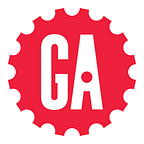UX, Visual, or Graphic: Which Type of Design Is Right For You?
--
By Madeline Burry
You can be pardoned for sometimes feeling confused about all the terminology and job titles floating around the design world. What is the difference between graphic design, visual design, and user experience design? Do the three roles provide a different service? For visual and graphic designers, the difference may lie mainly in the job title and salary expectations. However, a user experience designer has very different end-goals and responsibilities from a visual or graphic designers. Below, a breakdown of what each of these designers does.
Graphic Designers
In graphic design, something — whether it’s branding, information, or an advertisement — is communicated to users through text and images. How those two elements, text and images, are placed on the web page or printed page is also part of a graphic designer’s business, as well as font choices, color, and other visual elements.Through their craft, graphic designers inspire emotions and responses. A graphic designer will know that users will respond very differently to text written in the much-maligned Comic Sans font as opposed to in old-fashioned Courier New font. Similarly, response to an anti-poverty campaign will differ if it’s illustrated with an image of an underweight baby or a stock photo of a food. At its best, graphic design is iconic and recognizable, like the Coca-Cola font, the I heart NY logo, or the Gerber Baby.
Skills and Salary: Nowadays, most graphic designers need to have skills that go beyond a sketchpad and a pencil; proficiency in Adobe Photoshop, Illustrator, and InDesign is essential to working in both online and offline graphic design, and generally, a bachelor’s degree in graphic design or a similar course of study is required. The median national income for a graphic designer is $42,000, according to Glassdoor.com, with the starting salary tending to be in the low 30s, and a high-end salary bringing in $65,000. Graphic designers can work on design of print materials (packaging, brochures, magazines, etc.) or the design of webpages and apps. Need to know more about these programs? Check out this online Photoshop, Illustrator, and InDesign overview workshop.
Visual Designers
Visual and graphic design are very closely linked and the two terms are often used interchangeably. You may come across job advertisements and degree programs described as visual/graphic design. Sometimes visual design is referred to as visual communications, and this terminology may help give you a sense of difference between the two roles — where a graphic designer uses typefaces, hierarchy, color, images, and placement to create a perfect product, a company hiring a visual designer may be interested in a candidate with an ability to come up with a holistic aesthetic that travels across all platforms. Think of graphic designers as communicating information, and visual designers as being focused on the look and feel of the product and brand, as well as being involved in conversation about whatthe site or product provides, and project goals.
Skills and Salary: While the educational background for a visual designer is similar to that of a graphic designer, the pay rate is higher: The national median salary is $66,000, with a range that goes from $49,000 to $92,000. The strong association between the visual designer title and online design may explain the salary discrepancy; typically, online design work pays at a higher rate than print design. A visual designer serves as a mid-point between the pure design abilities of a graphic designer, and the more user-focused interests of a user experience designer. Which brings us to the third type of designer…
User Experience Designers
Unlike graphic and visual designers, who have as their main focus aesthetics and communication, user experience designers are focused on users and how they interact with the site. How do people move around the site? What happens when people click on this button? Will changing the color or size of a widget influence users to make bigger purchases, or interact with the site differently? To get an answer to these types of questions, user experience designers, called UX designers, will do user testing, often in the form of A/B testing. While user experience design is also concerned with the appearance of the site, it’s how users interact with the site, navigating through and making decisions on where to click (and where not to click) that most strongly occupies a UX designer. User experience designers create wireframes, or visual blueprints for a site’s design, as well as digging into information architecture, which is the fundamental way the information on the site is organized, displayed, and identified to users. Fundamentally, user experience designers ensures that a website is easy to use, and provides products, whether information, a service, or items for sale, smoothly and efficiency. Brush up on skills, and learn the fundamentals, with a twelve-week long course on user experience.
Skills and Salary: The field is relatively new, and interdisciplinary in nature, sodegrees in psychology, computer science, or graphic design could all be considered relevant according to Education Portal. There are a few schools starting to offer degree or certificate programs in UX, including Rutgers, Carnegie Mellon, SVA, and Pratt. The national median salary for this position is $85,000, with a range from $60,000 to $113,000, per Glassdoor.
Interested in a UX design career?
Learn more about UX design at GA.
Originally posted on General Assembly’s blog.
